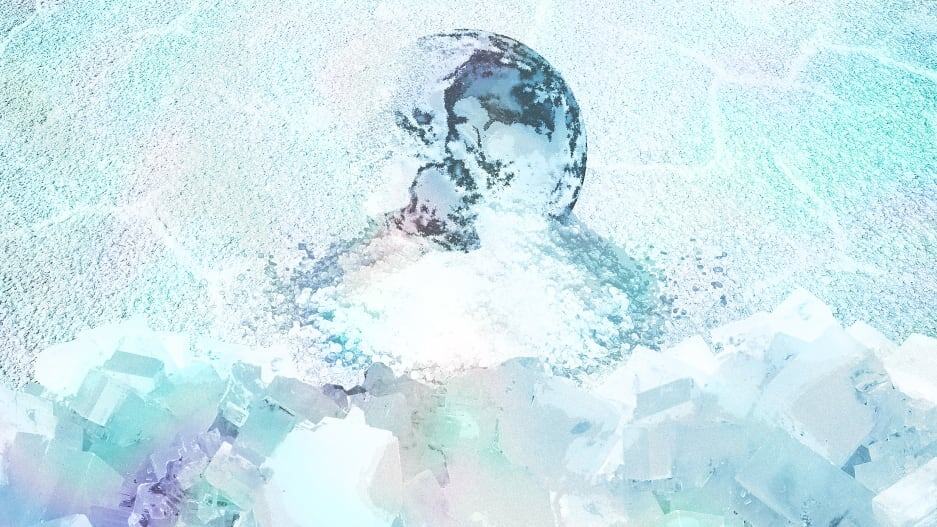- | 9:00 am
We’re obsessed with salt. It could be an ‘existential threat’
You may be familiar with the water cycle and the carbon cycle. There’s also a salt cycle—and humans are massively disrupting it.

We tend to think of salt as the ingredient that makes our chips and popcorn taste delicious. But its use extends way beyond that. It’s a key component of water treatments and road gritting. It’s in household and industrial products, from cosmetics to fertilizers. Globally, 300 metric tons of salt are produced each year.
This delicate balance that’s existed for millennia is referred to as the natural salt cycle. Salt naturally emerges to the Earth’s surface via geologic uplift and rock weathering. As rocks break down, they release salt ions into the soil; some are taken up by plants and organisms, and some are washed away into rivers and eventually oceans. Salt also enters the atmosphere through sea spray in coastal areas and salt dust in dry regions.
That’s important, because we need salt in our bodies, as do plants and animals. “We’re basically an electrical system, controlled by salts,” from the beating of the heart to nerve signals, says Sujay Kaushal, a professor of geology at the University of Maryland, who led the study. Soil needs salt to help it clump together. Plants need small amounts to aid metabolism and chlorophyll synthesis.
But we don’t want too much of it. Combining data from a range of sources, including the U.S. Geological Survey’s mineral yearbooks and global records of salinity measurements and river compositions, researchers found that human activity is affecting the natural salt cycle, bringing salt to the Earth’s surface more rapidly. That’s happening through salt mining for food and other products; from discharges from wastewater treatments and irrigation in farming; and from acid rain caused by pollution, which increases the rate of rock weathering. “All that accelerates the generation of salt at the Earth’s surface,” Kaushal says.
Now the concentration of salt in the environment is too high, and the soil and organisms can’t use all of it. Many essential species can’t survive with surplus salt, and those deaths alter biodiversity and can lead to invasive species like phragmites, the tall, reedy plants that are taking over coastal areas. Zooplankton, a critical ocean species that regulates algae, is also too sensitive to salt, and its decline could upend food webs.
Over-salinization is turning farmlands into wastelands and threatening food security. Past reports have shown that an estimated 833 hectares of land are already affected—an area about four times the size of India. Half of all the farmland in Uzbekistan is thought to be infertile due to superfluous salt.
And it’s bad for our health. The excess salt washes into groundwater, making it overly salty for our consumption, particularly for people with sodium-restricted diets. And it’s not just table salt, or sodium chloride; other calcium- and magnesium-based salts are also seeping out from the production of building materials and fertilizers.
“It’s like this chemical cocktail of different salts from different sources,” Kaushal says. “We don’t know the effects of that [on human health]. We don’t know what the mixture of salt ions will do.”
Alhough it’s a less-studied environmental topic than others, salinization has likely been increasing over decades. Kaushal found that it was an issue even 20 years ago when he published a previous study (which he says drew derision from colleagues, who told him: “Don’t spend your career on this!”).
If unchecked, he says, it could become a permanent crisis—which, unfortunately, is the direction we’re headed in, as the global salt market is predicted to grow by 43% by 2030. But Kaushal hopes his study will raise awareness that the salt crisis is a global one, perhaps prompting new policies, just as awareness of acid rain sparked stronger policies to mitigate air pollution. “We hope that people will recognize salt as an agent of global change,” he says.
Kaushal also hopes that increased awareness will lead to new ways to treat water and irrigate farmland. Separately, he notes that about 44% of the salt used in the U.S. is for road de-icing, at around 20 metric tons per year—and that shifting weather patterns due to climate change may add to the demand. Driving less (a broader goal of climate action) could help decrease salt use, as could sustainable de-icing alternatives like beet juice, which some cities are already utilizing.






































